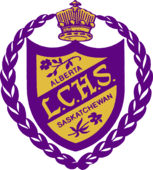Administrative Procedure 309
Service Dogs in Schools
Background
Lloydminster Public School Division is committed to the delivery of high quality education programs, supports and services that allow students with diverse needs to maximize their learning and achievement. The division recognizes the needs of some students may requires unique accommodation(s). These accommodations may include the use of a Service Dog where necessitated by the student’s learning profile and/or by medical restriction(s) such as blindness or low vision, deafness or hearing impairments as well as seizure disorder or autism.
Lloydminster Public School Division is also committed to ensuring it operates within the legal mandate of all legislation in meeting the needs of its students. This includes the Education Act, 1995, and the Policy on Service Animals within the Saskatchewan Human Rights Code.
Note: This Administrative Procedure does not pertain to the introduction of Therapy Dogs in schools. Therapy Dogs are specifically trained for Animal Assisted Therapy (AAT) and under the control of a specially trained animal handler at all times. Therapy Dogs are deployed as part of a trained AAT Intervention team directed by a health services professional with specialized AAT expertise. The provision of AAT is a specialized health service that is beyond the scope of the school division.
Definitions
Service Dog - a dog that has received specialized training and therefore is accredited to assist a person with a recognized disability or medical restriction.
Note: Assistance Dogs International is the recognized and approved entity for training of Service Dogs.
Procedures
- Determine Appropriateness of Service Dog Accommodation.
- the student’s needs, medical restriction, and/or learning profile;
- how existing accommodations or supports could address the student’s needs during school hours;and
- whether the Service Dog would address the student’s needs more effectively than other available accommodations.
- Prior to applying to have a Service Dog as an accommodation at school, the parents/legal guardians must meet with the school principal to discuss the following:
- The principal will ensure that the use of a Service Dog is consistent with the needs or recommendations of the IIP process;
- Application Process
- Lloydminster Public School Division Application for a Service Dog (Appendix B)
- Lloydminster Public School Division Medical Certificate indicating the restrictions for the student (Appendix C)
- Parents will receive a letter requesting the medical information attached to the Medical Certificate. The letter will be issued by the Superintendent of Education.
- Parents must deliver the letter of request and Medical Certificate for completion by their medical doctor.
- Proof of the Service Dog’s accreditation from Assistance Dogs International.
- Adjudicate the application and supporting medical documentation;
- Determine whether the specific medical restriction is best addressed by the introduction of the specific dog as an accommodation at the school;
- Communicate the results of the application to the parents:’
- Where any of the above criteria are found deficient, communication will be made to the parents that the application does not meet the criteria for approval of the Service Dog.
- Where the above are found to meet criteria, communication will be made to the parents regarding next steps towards implementation of the Service Dog.
- Determine whether or not the introduction of a Service Dog into the school will represent an undue hardship (as per Human Rights Commission Policy) and/or affect the medical restrictions of other students in the school;
- Provide opportunity for staff and families at the school to express concerns about the introduction of a service dog to the school;
- Where concerns exist, determine whether complementary accommodations can be made that support both parties;
- Identify handler who will fulfill the obligations of that role in accordance with the Human Rights Commission Policy on Service Animals;
- Where it is determined that available accommodations are not effective, parents may apply to have a Service Dog accompany a student at school. To apply, parents submit the following to the principal:
- After receiving from the parents the completed application for, the Medical Certificate completed by the physician, and the proof of the Service Dog’s Accreditation, the principal shall, with the support of the Superintendent of Education:
- Where it is determined that the Service Dog is the appropriate accommodation for the student’s medical restriction, the principal shall, with the support of the Superintendent of Education:
- Preparation for Implementation of Approved Service Dog - Prior to the introduction of the Service Dog at the school, the following must be in place:
- The parent/legal guardian must:
- Accept all liability that might be incurred as a result of the behavior of the Service Dog while present at school and indemnify the school division in writing;
- Provide proof of appropriate insurance coverage (third party liability of not less than $2,000,000) naming the Division as an additional insured arising out of the named insured (for any damages caused by the Service Dog) and provide proof of such coverage annually;
- Participate in meetings to ensure that the bonding and training are progressing suitably well for the training agency to recommend the Service Dog’s readiness to be at school;
- Provide information in writing from the organization that trained the Service Dog indicating details around the personal care and physical needs of the Service Dog, including:
- safest and most environmentally sound place for the dog to relieve itself;
- safe removal and disposal of dog waste;
- considerations for seasonal changes and inclement weather
- Provide up-to-date proof of vaccinations and licensing of the Service Dog annually.
- Cooperate with the school administrators to make arrangements for how and when initial and ongoing training will be provided for staff;
- Arrange with the training agency of school personnel in the use and care of the Service Dog while at school; and assume all costs for the training;
- Arrange for the Service Dog to visit the school to familiarize it with the school site;
- Give permission to school division staff and volunteers acting as handlers to touch, feed or deal with the Service Dog in any way that may be required to ensure appropriate care of the Service Dog and the safety of students and staff
- The school principal shall:
- Consult with the appropriate Superintendent of Education prior to discussing the implementation of a Service Dog at school;
- Confirm who will be the designated handler(s) for the service dog and ensure training is provided;
- Ensure the personal care and physical needs of the service dog are met, such as per 3.1.4 above;
- Consider logistical arrangements in classes and hallways;
- Implement complementary accommodations for staff or other students as needed (e.g. where allergies, phobias etc. exist);
- Inform all staff, parents and the SCC regarding the introduction of a Service Dog;
- Arrange for information sessions describing Service Dog procedures for the student body, staff and/or the community as deemed necessary to provide education and awareness;
- Ensure that the Manager of Transportation is contacted regarding any transportation requirements, where applicable;
- Revise emergency procedures as required to include the service dog (i.e.: notification to the Fire Department regarding the existence of the Service Dog);
- Post signs on each entry door of the school and throughout the school to advise staff, visitors and community of the presence of a working Service Dog and the procedures and rules pertaining to the Service Dog;
- Retain the application, insurance and related documentation in the student’s cumulative folder;
- Ensure that the Service Dog accommodation is described in detail in the student’s Inclusion and Intervention Plan, including a measurement plan with clear indicators of the effectiveness of the accommodation.
- The parent/legal guardian must:
- Considerations and Limitations - Considerations and limitation include:
- The school division may impose reasonable conditions or restrictions relating to:
- Transportation of the Service Dog to and from school;
- Restricting the presence of the Service Dog to specific areas in the school;
- Exclusion from access to specific areas where required by other laws (i.e.: food preparation areas).
- The right to be accompanied by a Service Dog does not apply if the individual is not in control of the behaviour of the Service Dog and no other appropriate and trained handler is available.
- The agreement to accommodate a Service Dog is reviewed annually and may be modified as required following the same process as set out in this administrative procedure.
- If the student moves to a different school, the request for a Service Dog must be resubmitted and initiated in advance, at the new site, with the principal.
- The approval of the Service Dog as an accommodation may be terminated by the division if the dog does not have up to date documentation or licensing, or vaccinations.
- The school division may impose reasonable conditions or restrictions relating to:
- Communication
- Letters will be distributed (samples attached) as follows to inform:
- The school community of the arrival of the service dog, its purpose and rules regarding conduct around the service dog;
- The families of the Service Dog to elicit information concerning allergies, phobias or religious considerations from the students’ families;
- The families of any student who will be sharing transportation where the Service Dog will be present, where applicable.
- Letters will be distributed (samples attached) as follows to inform:
Appendices
Appendix A: Service Dog Information Letter
Appendix B: Service Dog Application Form
Appendix C: Medical Certificate
Reference
Policy on Service Animals, Saskatchewan Human Rights Commission
Revised
May 14, 2019





























